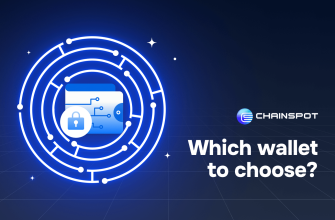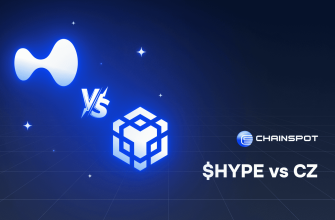- 1) What FUD actually is (and why it works)
- 2) The FUD factory: eight repeatable sources
- 3) Your anti-FUD brain: biases to watch in yourself
- 4) The 1–5–30 minute FUD Verification Playbook
- Minute 1: Triage
- Minutes 2–5: Quick checks
- Minutes 6–30: Deep dive (only if needed)
- 5) Red flags (and green flags) in FUD claims
- 6) Turning FUD into decisions: the 3-Scenario Method
- 7) Risk architecture that survives FUD
- 8) Communication hygiene (for teams and communities)
- 9) FUD and trading: practical tactics
- 10) Distinguishing FUD from fundamentals
- 11) Case sketches (composite patterns you’ll see again)
- 12) Personal anti-FUD habits (so you don’t spiral)
- 13) The “FUD Shield” starter kit (tools)
- 14) For founders: pre-commit your FUD response
- 15) Checklists you can print
- A) 10-minute FUD check
- B) Trader’s daily defense
- C) Team comms on incident
- 16) When to ignore FUD (and when to run)
- 17) Closing: become the operator, not the audience
TL;DR:
FUD—fear, uncertainty, doubt—is both a signal and a weapon. You can’t eliminate it, but you can audit it fast, decide with rules, and execute cheaply. This guide gives you a practical system: (1) spot the common FUD patterns, (2) run a 1–5–30 minute verification playbook, (3) translate noise into scenarios with position sizing, and (4) build daily habits and team comms that keep you from donating PnL to panic. When you do need to reposition—hedge, rotate chains, or raise gas—compress costs: swap + bridge in one click with Chainspot and earn cashback + referral rewards: https://app.chainspot.io
1) What FUD actually is (and why it works)
Let’s strip the drama. Fear is emotion, uncertainty is missing data, doubt is a hit to credibility. In crypto, FUD shows up when:
-
A rumor appears faster than facts (screenshots, anonymously sourced “leaks”).
-
Metrics move without context (TVL drop after incentives end; labeled “death spiral”).
-
Real risk is framed as existential (an exploit, a solvency scare) to trigger forced sellers.
Two truths can coexist:
-
There’s healthy caution (risk management).
-
There’s weaponized messaging (competitors, coordinated shorts, engagement farming).
Your edge is to tell them apart before your thumbs click “market sell.”
2) The FUD factory: eight repeatable sources
-
Anonymous “insider” threads: selective DMs, cropped dashboards.
-
On-chain half-truths: a treasury move labeled “dump,” when it’s a multisig rebalance.
-
Chart bait: zoomed-in timeframes that hide context.
-
Exchange/bridges: delayed withdrawals = “insolvency”; often ops maintenance. Sometimes real—know the difference.
-
Regulatory whispers: “ban” vs. “guidance”; headlines outpace text.
-
Governance fights: a loud proposal sounds existential, but isn’t executable.
-
Security theater: an “exploit” that is a UI bug, or vice versa.
-
Engagement farms: accounts that only post extremes, never receipts.
Once you’ve seen these patterns, you stop subsidizing them with your PnL.
3) Your anti-FUD brain: biases to watch in yourself
-
Negativity bias: bad news is stickier than good.
-
Loss aversion: fear of losing $1 hurts ~2× more than joy of gaining $1—nudges you to over-react.
-
Availability heuristic: the headline you just read feels like the full story.
-
Confirmation bias: you retweet the take that reinforces your position.
-
Tribalism: “my chain good, your chain bad” = low-IQ risk.
-
Sunk cost: you hold because you held.
-
Time-compression: treating a multi-year thesis like a 15-minute scalp.
Name the bias, and it loses half its power.
4) The 1–5–30 minute FUD Verification Playbook
Goal: in half an hour or less, downgrade or escalate the risk—then act once with intention.
Minute 1: Triage
-
Source? Official handle, core contributor, reputable researcher, or anon engagement farm?
-
Evidence? Hashes, links, signed messages, or just screenshots?
-
Scope? Protocol-specific, chain-wide, or venue-level?
If it’s pure vapor, mute it and go back to work. If not, step to five minutes.
Minutes 2–5: Quick checks
-
Official channels: website, GitHub/Discord/Gov forum—status page, PRs, incident notes.
-
Explorer sanity: Etherscan/-scans/Solscan—actual tx? multisig? token movement context?
-
Known trackers: reputable dashboards (not copycat forks) for TVL/flows.
-
Venue status: exchange/bridge notices; is there maintenance?
You’ll kill 70% of FUD here. If smoke remains, take it to 30.
Minutes 6–30: Deep dive (only if needed)
-
Trace the transactions: follow the largest tx (deployer, treasury, multisig) across hops.
-
Read the code path: for exploits/changes, skim the contract/upgrade diff or a credible post-mortem.
-
Cross-validate with at least two independent sources.
-
Build scenarios: see Section 6. Then act.
Important: if you must reposition (hedge, rotate to another chain, raise gas), do it cheaply. Route swap + bridge in one step and collect cashback with Chainspot so you don’t pay 40–80 bps in avoidable costs: https://app.chainspot.io
5) Red flags (and green flags) in FUD claims
Red flags
-
No hashes, no tx links, no names.
-
Cropped screenshots.
-
Vague timing (“imminent”, “soon”), no reproductions.
-
Accounts that only post rage bait.
-
“Everyone knows…” with zero receipts.
Green flags
-
Direct links to commits, proposals, or transactions.
-
Plain English risk description + mitigation steps.
-
Signatures or multisig announcements.
-
Measured tone from credible builders or auditors.
-
Clear blast radius: what is impacted, what is not.
When you see green flags and real blast radius, that’s action time. Otherwise, it’s timeline theater.
6) Turning FUD into decisions: the 3-Scenario Method
Scenario A (Base): The claim is exaggerated; nothing material changes.
Scenario B (Adverse): Temporary pain—liquidity shock, delayed unlocks, minor exploit with restitution path.
Scenario C (Severe): Insolvency, unrecoverable exploit, legal kill shot.
For each scenario, pre-write:
-
What to do (hedge, reduce, hold, buy),
-
At what price/trigger,
-
With what size,
-
On which venue/chain,
-
How to execute (limits/RFQ/one-click route).
When your pre-plan is written, you’re not bargaining with fear; you’re following instructions.
7) Risk architecture that survives FUD
-
Position sizing rules: % of bankroll per idea, per venue, per chain.
-
Staggered exits: reduce-only brackets set when calm, not during panic.
-
Cash buffers: stablecoins + native gas on at least two chains at all times.
-
Separation of concerns: hot wallet for experimentation, vault (hardware or multisig) for savings.
-
Cooldowns: after two consecutive losers, stand down for an hour.
-
Daily loss stop: the line that protects your month.
-
Journal: reasons, entries, exits—you cannot fix what you refuse to write down.
Every pro I’ve coached who lasts a full cycle does some version of the above. It’s boring. It’s also how you keep your account.
8) Communication hygiene (for teams and communities)
If you run a protocol, exchange, bridge, or wallet, your response is the story.
Do
-
Publish a single source of truth (status page, incident doc).
-
Lead with what you know, what you don’t, what you’re doing next.
-
Include hashes/tx links; if sensitive, explain why and when links will come.
-
Set a cadence (e.g., hourly updates until resolved).
-
Provide workarounds or temporary limits; be precise.
Don’t
-
Fight on Twitter with bait accounts.
-
Over-promise timelines you can’t hit.
-
Disappear. Silence is gasoline.
Strong comms don’t just calm users; they limit contagion and legal risk.
9) FUD and trading: practical tactics
-
Execute like an adult
Use limit orders or RFQ; avoid slamming the book in the wildest minute. On-chain, keep slippage tight and, for size, use MEV-protected routes. -
Respect funding windows
New leverage right into a funding snapshot is a donation. -
Avoid obvious stops
Most stop hunts target prior day highs/lows. Use alerts, manual exits, or stops with buffers. -
Derivatives posture
Check funding, open interest, and basis. Extreme negative funding + rising OI often precedes violent squeezes—both directions are possible. -
Route costs matter
Moving collateral between chains? Don’t chain three separate steps. Swap + bridge in one flow on Chainspot, and stack cashback + referral bps you’d otherwise burn: https://app.chainspot.io
10) Distinguishing FUD from fundamentals
When in doubt, revert to the ledger and the P&L of the protocol:
-
Treasury runway: months of stablecoin runway at current burn.
-
Revenue quality: recurring vs one-off emissions games.
-
Real users: distinct wallets with sustained activity, not weekend quests.
-
Liquidity quality: organic depth across venues; not farmed mercenary TVL.
-
Token mechanics: supply schedule, actual float, unlocks with context.
-
Security posture: audits, bug bounty activity, post-mortems with fixes.
-
Governance: can the scary proposal even execute? Who holds quorum?
FUD crumbles when it collides with numbers you can verify.
11) Case sketches (composite patterns you’ll see again)
-
“Solvency” rumor vs. ops maintenance
Withdrawals slow during a data-center migration; panic posts claim insolvency; official status page explains; explorer shows hot-wallet reshuffle; everything normal next day. Lesson: check the status page and tx flow first. -
“Exploit” that’s a UI bug—and the inverse
Front-end shows phantom balances; team posts an incident; contracts are untouched. Another time, the UI is fine but a contract is exploited—tx hashes tell the truth. Lesson: separate UI from on-chain. -
“Ban” vs. “guidance”
A headline says “banned,” the text says “registration and disclosures.” Price reverts when text circulates. Lesson: read at least the press release or actual doc before moving size.
These patterns repeat. Build memory; act faster next time.
12) Personal anti-FUD habits (so you don’t spiral)
-
Timeframe check: are you a 6-month holder arguing with a 6-minute scalper?
-
Physiological reset: get up; 10 deep breaths; water; walk. It sounds silly until you compare outcomes.
-
Single scan view: a watchlist layout that shows price, depth, funding, and news side-by-side.
-
Mute lists: keep your timeline clean; unfollow chronic alarmists.
-
Delay hot takes: if you wouldn’t stake money on the take, don’t tweet it.
Your mind is part of your stack. Don’t let it run unpatched.
13) The “FUD Shield” starter kit (tools)
-
Explorers: Etherscan/-scans, Solscan, OKLink—ground truth.
-
Data: Dune dashboards you understand, not just pretty charts.
-
Entity labels: Nansen, Arkham—who’s moving what (don’t outsource thinking).
-
Simulation: Tenderly—dry-run calls, inspect traces.
-
Comms: a shared incident doc template (teams), pinned Telegram/Twitter status links.
-
Execution: a cross-chain route you trust—Chainspot—so “react” never equals “overpay.”
14) For founders: pre-commit your FUD response
-
Status page with uptime history & incident posts.
-
Proof pages: reserves, multisig signers, emergency runbooks.
-
Public dashboards: one link for treasury flows, another for key metrics.
-
Crisis contact card: media, auditors, security researchers—names and PGP.
-
Cadence clock: promised update frequency under incident.
-
Post-mortem discipline: plain language, next steps, deadlines.
This isn’t fluff. It’s how you keep users and partners when it’s loud outside.
15) Checklists you can print
A) 10-minute FUD check
-
Source identified?
-
Evidence linked (hashes, tx, repo)?
-
Scope mapped (protocol/venue/chain)?
-
Official channel checked?
-
Explorer proof reviewed?
-
Scenario A/B/C drafted?
-
Action needed? If yes, how and where?
-
Execute once; journal the decision.
B) Trader’s daily defense
-
Position size rules reviewed?
-
Funding & OI scanned?
-
No fresh leverage into event minutes?
-
Limits/RFQ only; reduce-only brackets set?
-
Gas + stables on two chains?
-
Cross-chain route plan: Chainspot bookmarked?
C) Team comms on incident
-
Single source of truth live?
-
First update published with what/unknowns/next?
-
Links to proofs included?
-
Update cadence running?
-
Mitigations/temporary limits documented?
Tape these somewhere visible. You’ll thank yourself later.
16) When to ignore FUD (and when to run)
Ignore when:
-
No hashes, no links, no names.
-
Claims contradict on-chain facts within minutes.
-
The messenger has zero skin in the game and a history of rage bait.
Run when:
-
Signed or on-chain proofs show stolen funds with no restitution path.
-
Custodians halt withdrawals without explanation and silence follows.
-
Admin keys or upgraders are compromised and the team confirms they’ve lost control.
That’s it. Everything else is in between—and you have a system for “between.”
17) Closing: become the operator, not the audience
FUD isn’t going away. Markets are built on narrative, and narrative loves adrenaline. But you don’t have to be the content. Make your default state a check-list, not a timeline.
-
Audit fast.
-
Decide with rules.
-
Execute once, cheaply.
-
Move on.
And every time the plan says “rotate collateral,” “buy gas on another chain,” or “de-risk to stables”—save the basis points you can control:
Swap + bridge in one click and earn cashback (plus referral rewards) with Chainspot: https://app.chainspot.io
Stay calm. Trade clean. Let the facts, not the feed, run your decisions.












